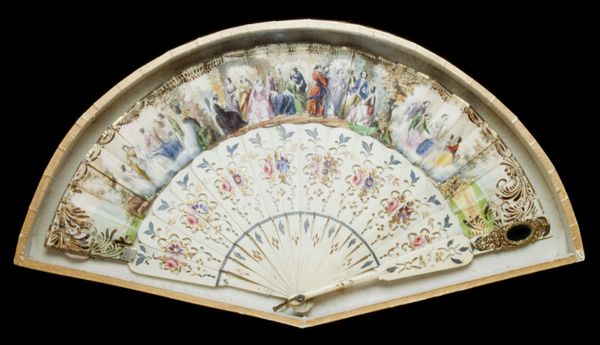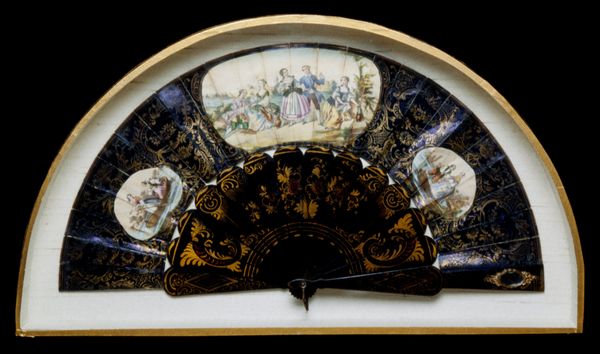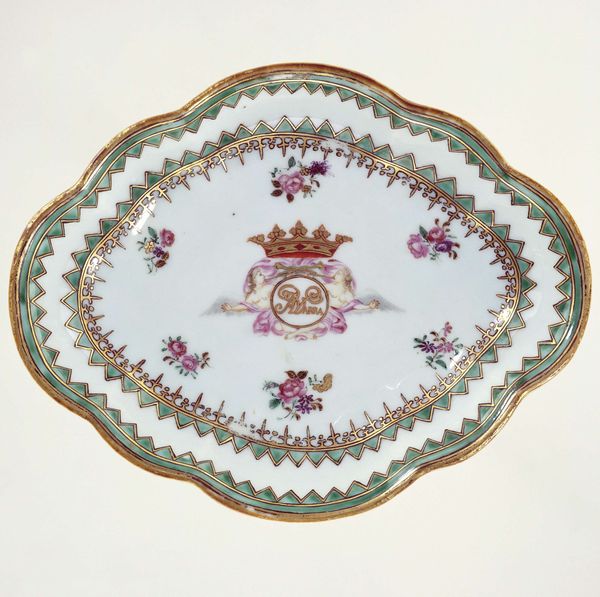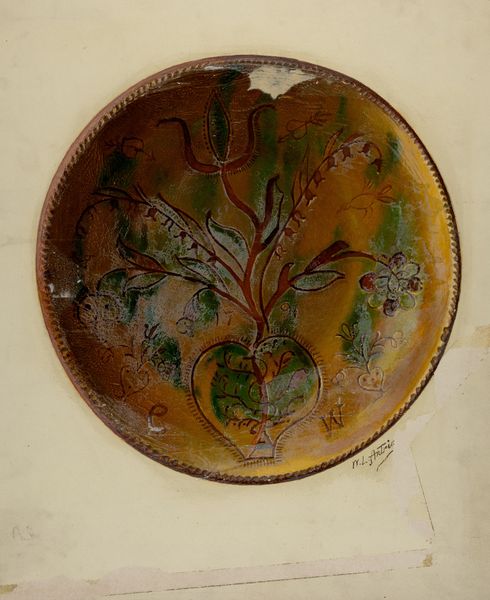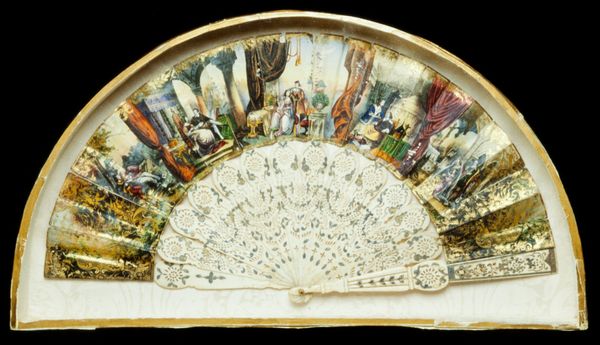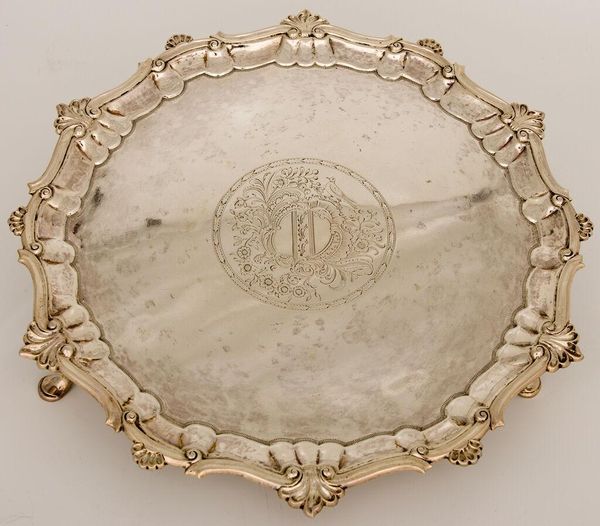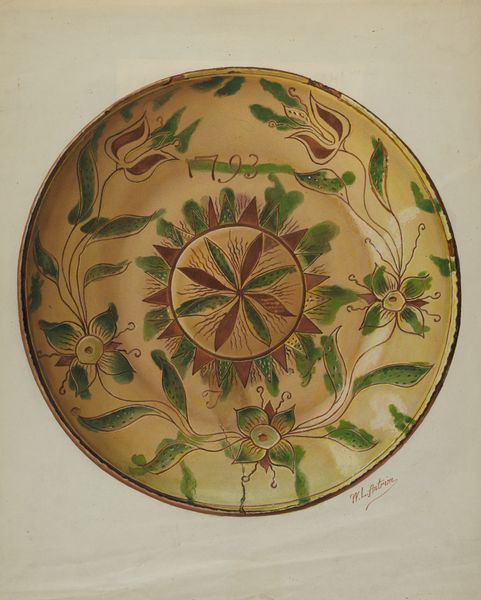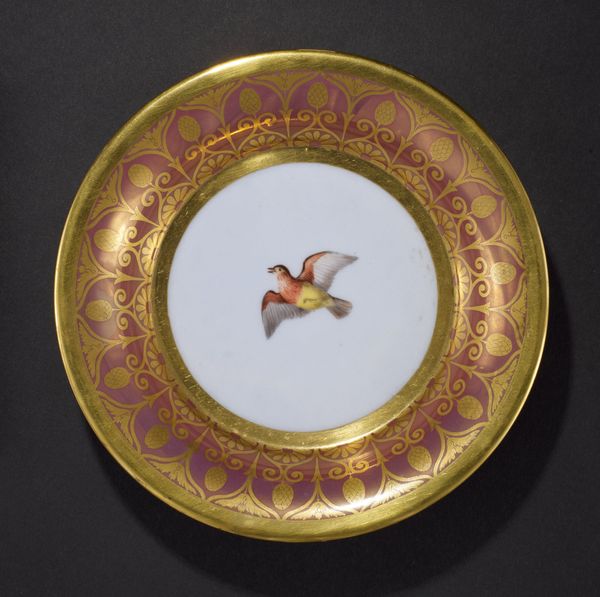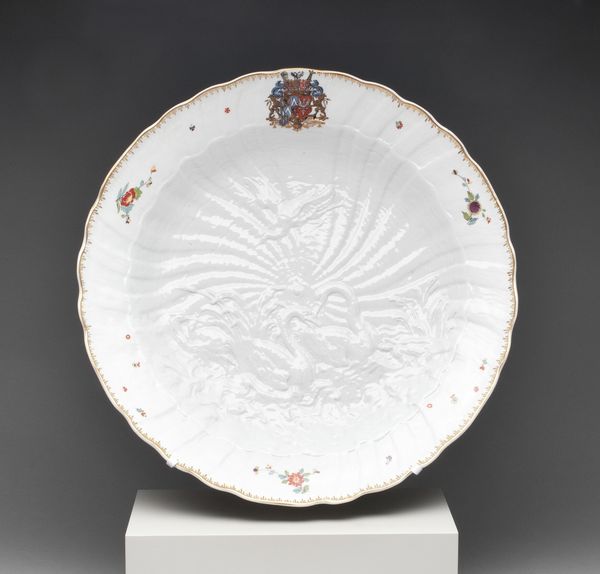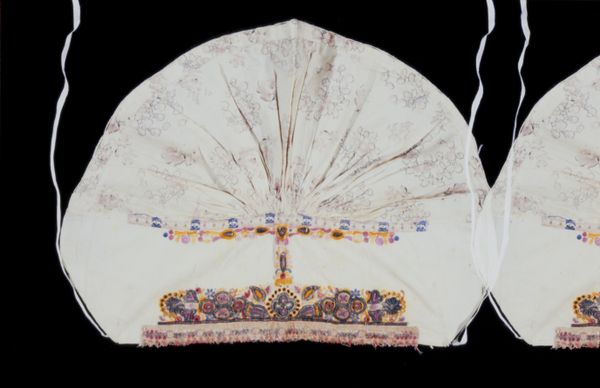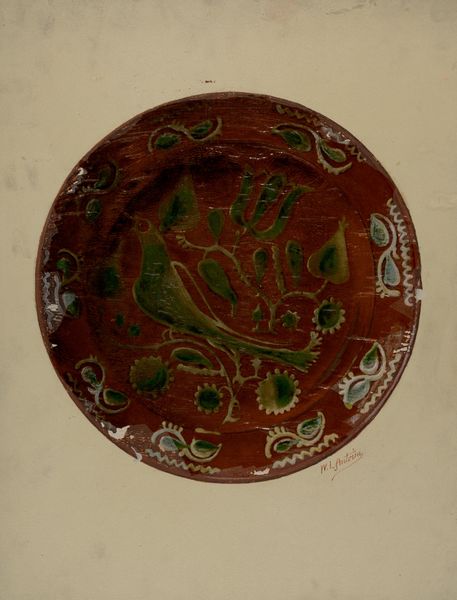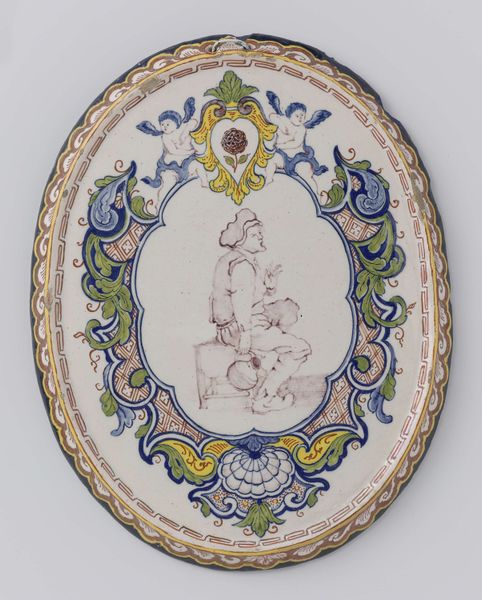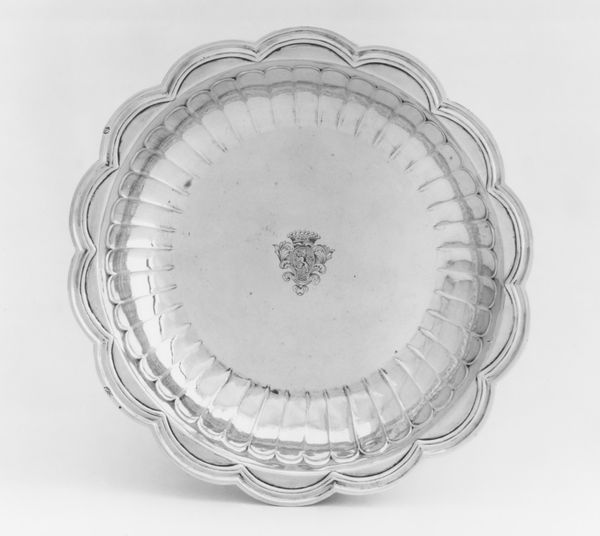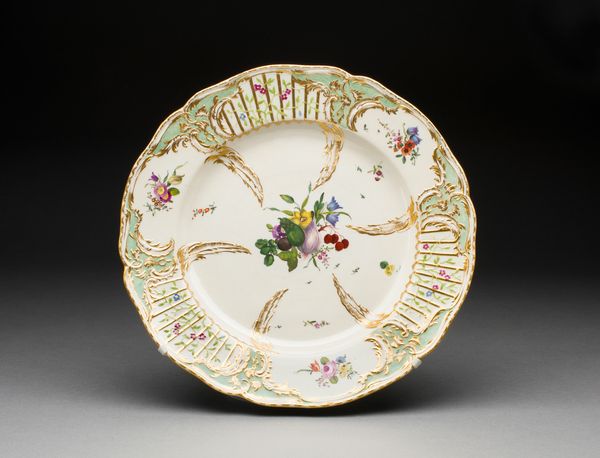
carving, sculpture, ivory
#
carving
#
sculpture
#
sculpture
#
genre-painting
#
decorative-art
#
ivory
#
decorative art
#
miniature
Dimensions: 19 x 10 3/4 in. (48.26 x 27.3 cm) (framed, mounted)
Copyright: Public Domain
Curator: Oh, this is exquisite. What a delicate thing of beauty. Editor: It has a certain shimmering lightness to it, almost ethereal. There’s also something melancholic in the way it’s presented, encased like a precious memory. Curator: This object is called “Fan – 'Amore Scene'”, crafted around the 18th century. It's currently held in the collection of the Minneapolis Institute of Art. What’s fascinating is the medium: intricately carved ivory. Editor: Ivory. The layers of implication are immediately apparent. The status of the owner, the colonial contexts of acquisition... But tell me more about what we’re actually seeing. Curator: Well, it seems to depict a genre scene, an "amore scene" if you will. There are figures carved into the ivory surface and painted on the upper portion. There's a clear engagement with decorative art traditions here, aiming for ornamentation and refinement above all else. Editor: And that very ornamentation serves specific social functions. Fans like this weren’t mere objects; they were tools for communication, statements of class, even veiled weapons of seduction within the power dynamics of the era. Were these types of objects widely used? Who had access to the world it portrayed? Curator: Good questions. Fans like this were indeed quite popular among the upper classes, serving both practical and symbolic purposes. They became essential parts of social rituals, and like jewelry, reflected on social hierarchy and gender roles. And they could send a variety of messages. The figures featured here seem to echo that very exclusivity, removed from labor and worry. Editor: I’m struck by the dissonance, though. This beautiful, fragile object born of a brutal trade. Its display is visually pleasing, no doubt. How do we engage critically with its complicated provenance and acknowledge that its elegance conceals a darker history? Curator: Precisely. I think, in part, that’s the crucial work for us. Acknowledging that these art pieces aren't merely aesthetic marvels. They are material testaments to very particular stories of power and inequity, that can lead to broader understandings of social issues like identity, class and politics. Editor: It's in making that complex history known, giving it voice, that the real significance emerges. We have a responsibility, then, to remember that no object is ever simply itself.
Comments
No comments
Be the first to comment and join the conversation on the ultimate creative platform.
